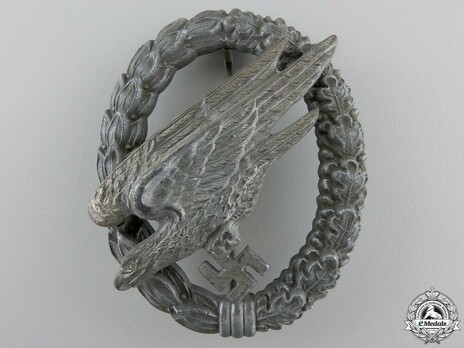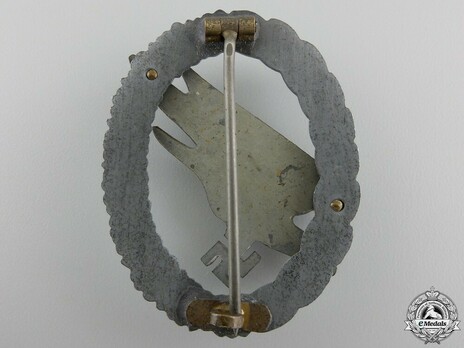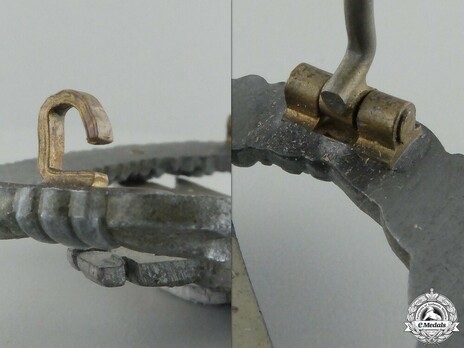Luftwaffe Paratrooper Badge, by Steinhauer & Lück (in zinc)
CATEGORY: Version
SKU: 01.GTR.0707.101.11.000
Estimated market value:



Estimated market value:
A Luftwaffe Fallschirmjäger Badge by Steinhauer and Lück - A late war badge produced in zinc, with gilding worn off, unmarked but exhibiting the manufacturing characteristics of Steinhauer & Luck badge, weighs 30.0 grams, very fine condition.
The Luftwaffe Paratrooper Badge was instituted by Hermann Göring on November 5, 1936. It is a qualification badge that was awarded for those that successfully passed the tests to become a paratrooper. In order to do that, a soldier had to have six confirmed parachute jumps to his name.
Later regulations state that officially every owner of a Paratrooper Badge had to repeat this feat inside every 12 months period, otherwise they were to return their badge. However, there is no evidence that this was actually enforced. In fact, in the later years of the war the Luftwaffe Paratrooper Badge could be awarded to any soldier that was part of a paratrooper unit, even those that did not receive parachutist training, but were merely assigned to the unit as a medic or driver.
The initial regulations stated that the wreath of the badge was to be made of oxidized Neusilber. Neusilber, also known as nickel silver, is an alloy of brass and nickel, and does not in fact contain actual silver. Oxidizing nickel silver darkens it and gives it an antique look. The eagle was to be made of gilded brass.
In September of 1937, this was changed. Now, the entire badge was to be made of aluminum, with the wreath still in an antique silver look and the eagle still gilded. Some companies also experimented with cupal, which is not an alloy, but a composite material of an aluminum base with a thin copper plating.
With material shortages worsening as the war went on, by 1942 most badges were now made from a lower quality and abundant material, zinc.
Since most companies produced a plethora of different variants and variations, not necessarily all of them can and will be displayed here.
Wartime badges by Steinhauer & Lück are unmarked and made of zinc. The very few examples found with maker marks are believed to be post-war made.
This maker produced a very small number of badges with a silver wreath instead of the regulation blackened wreath.
A curious thing is the existence of a Steinhauer & Lück made cupal eagle. This version is believed to have been used for mid to late war productions. These eagles are also found on the badges of other makers in limited amounts. It is unknown why this was done. While some of these badges are most likely wartime productions, some badges with cupal eagles are believed to have been made post-war, as they share more in common with the denazified 1957 version than the other wartime badges.

Comments
Sign in to comment and reply.


Scroll Top